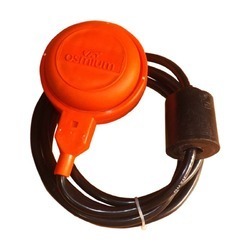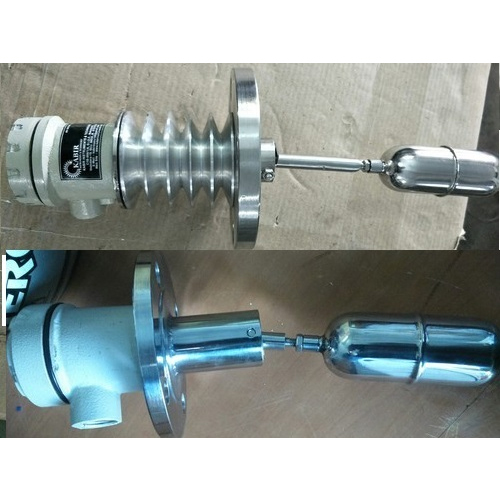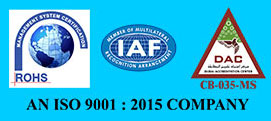Call Us
07971459101

Float Level Switch
Product Details:
- Protection Level IP65
- Rated Voltage 230 Volt (V)
- Temperature Range 150 Celsius (oC)
- Material Plastic
- Size Standard
- Click to view more
Float Level Switch Price And Quantity
- 270 INR/Piece
- 1 Piece
Float Level Switch Product Specifications
- Standard
- 150 Celsius (oC)
- IP65
- 230 Volt (V)
- Plastic
Float Level Switch Trade Information
- 10 Piece Per Week
- 1 Week
Product Description
A float level switch is a device used for liquid level sensing and control. It operates based on the principle of buoyancy. The switch typically consists of a buoyant float that rises and falls with the liquid level. As the liquid level changes, the float moves with it, activating or deactivating a switch based on predefined setpoints.
How a Typical Float Level Switch Works
-
Float Mechanism:
The float is often made of a buoyant material such as foam or plastic. It is attached to a lever or rod that moves with the rise and fall of the liquid level. -
Switch Mechanism:
The switch is connected to the float mechanism. It can be a mechanical switch or a modern electronic switch, depending on the design. The switch is positioned at a certain height on the float mechanism and is activated or deactivated as the float reaches specific levels. -
Mounting:
The float level switch is usually mounted inside a tank or container at the desired level where you want to monitor the liquid. -
Wiring:
In electronic float level switches, wiring connects the switch to a control system, triggering alarms or other actions based on the liquid level.
Applications of Float Level Switches
-
Pump Control:
Ensures pumps activate when liquid is high and deactivate when low. -
Tank Level Monitoring:
Monitors and controls liquid levels in tanks, preventing overflows or low-level issues. -
Alarm Systems:
Alerts operators or control systems when a certain liquid level is reached. -
Industrial Processes:
Used in various industrial processes requiring precise liquid level monitoring and control. -
Sump Pump Systems:
Activates pumps in residential and commercial sump pits to prevent flooding. -
Oil and Gas Industry:
Monitors levels in storage tanks to prevent overfilling and ensure safe storage. -
Wastewater Treatment:
Controls levels of sewage and liquids during different treatment stages. -
Cooling Systems:
Maintains proper water levels in cooling towers and other systems. -
HVAC Systems:
Monitors water levels in humidifiers, boilers, and other HVAC components. -
Food and Beverage Industry:
Monitors liquid levels in tanks and containers during production and processing. -
Marine Applications:
Ensures bilge pumps remove water efficiently to prevent flooding. -
Chemical Processing:
Controls liquid levels in storage tanks and vessels, preventing spills and ensuring safety.
Float Level Switch Specifications
-
Standard Range: 100 mm to 3000 mm
-
Temperature: Up to 150°C
-
Pressure: Up to 15 Kg/cm²
-
MOC: SS 304, SS 316, SS 316L, PP, PVDF
-
Connection: Flange End / Screwed / To Specify
FAQs of Float Level Switch:
Q: What material is the Float Level Switch made of?
A: The Float Level Switch is made of plastic.Q: What is the temperature range the Float Level Switch can handle?
A: The Float Level Switch can handle temperatures up to 150C.Q: What protection level does the Float Level Switch have?
A: The Float Level Switch has an IP65 protection level.Q: What is the rated voltage of the Float Level Switch?
A: The rated voltage of the Float Level Switch is 230 Volts (V).Q: What is the size specification of the Float Level Switch?
A: The Float Level Switch is available in a standard size.
Price:
- 50
- 100
- 200
- 250
- 500
- 1000+
Other Products in 'Level Switch' category
And also we want more inquires from countries like Middle East Countries, African Countries, South East Asia and North America.









